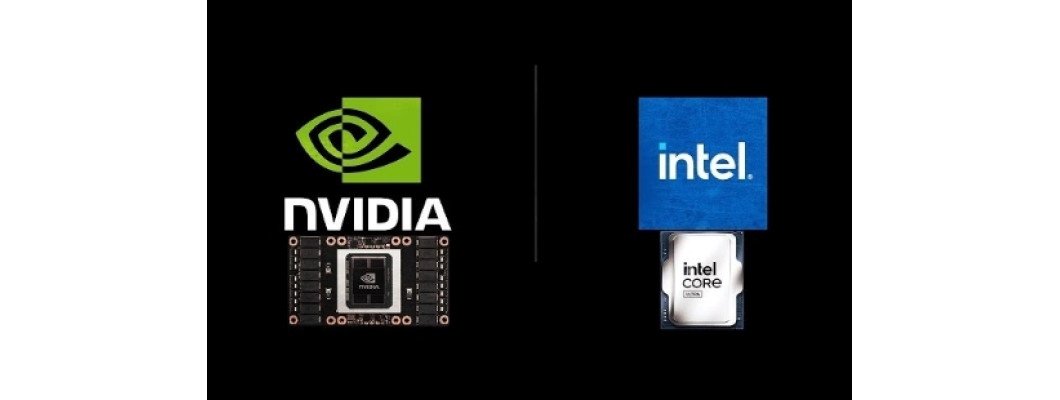
Intel x86 RTSoC: A New Revolution with Intel and Nvidia
Today we have entered an era where Intel and Nvidia are working together. And that is not just for laptops or desktops. Through the entire x86 SoC. Intel x86 RTSoC is a chip where Intel's CPU architecture and Nvidia RTA graphics work together. This is a new revolution for gaming, AI and high performance computing.
Today we will know how the architecture works inside this chip. And when is it going to come. So let's get started.
Intel’s CPU Dominance and Nvidia’s GPU Leadership
Intel has been dominating the CPU market of SAC for a long time. Hyper Trading, Turbo Boost, various cores and trade optimization are providing many more unique features.
On the other hand, GPU godfather Nvidia has been ruling the GPU market for a long time. Nvidia is quite famous for racing, CUDA course, Tensor course, Air acceleration.
Why a Combined SoC?
We know that usually in gaming laptops or desktops, the CPU and GPU are separate. Due to which the latency is a little higher and the energy efficiency is also lower.
Intel x86 RTSoC is going to come as a solution to this. In this, the CPU and GPU will be on the same die. The latency will be reduced by using shared memory. And of course, the power efficiency will also increase.
Architecture and Design of Intel x86 RTSoC
As I said, the CPU part will have a processor of Intel x86 architecture. And the cores will be of hybrid core architecture: performance plus efficiency cores. And there will be air accelerators.
And in the GPU part, there will be NVDD RTA cores. Which will include RT cores for rate testing, Tensor cores for AI/ML and CUDA cores for computing. This SSC can be used with DETER5 or LPDDR5 or HBM.
Memory Coherence
Here memory coherence will be maintained between CPU and GPU. So zero copy operations are possible.
Let me put it a little simpler: CPU and GPU are two different processors and both want to use the same data. Coherence means that when CPU and GPU use data from the same memory, they read the same data. There is no mismatch or outdated data.
For example, if CPU updates a file, GPU can use the updated data instantly. No need to make a new copy. And here are zero copy operations. CPU and GPU can rewrite data from the same memory without extra copying.
As a result, latency will be reduced in Intel x86 RTSoC, performance will increase, and memory usage will be reduced.
One more note: AI works CPU, AI Engine and Tensor Core can be handled from both sides.
Main Features of Intel x86 RTSoC
Real-Time Ray Tracing
The RTA cores that Intel x86 RTSoC will have will work for retracing in real time. We know that retracing is a graphics technology, due to which light, shade, reflection and refraction look more realistic.
Tensor Core + CPU AI Engine
The Tensor Core and CPU AI Engine of Intel x86 RTSoC handle AI and machine learning workloads together. These features AI functions like stable diffusion, AI event generation, AI video upscaling for low-res video upscaling. And deep learning inference will be done faster and with low latency.
Energy Efficiency
Since it is an SoC there will be a separate focus on energy efficiency. In Intel x86 RTSoC, the CPU and GPU share the same power budget. DVFS stands for Dynamic Voltage and Frequency Scaling.
The voltage and frequency will be adjusted according to each core or block. As a result, there will be less power consumption in light workloads. And more performance will be available in heavy workloads. The idle core will go into sleep mode in the background, which increases overall efficiency.
High Bandwidth Interconnect
There will be a 100+ GB/s bandwidth high speed bus between the CPU and the GPU. As a result, the data transfer latency will be very low. Like video rendering, AI inherence and loading gaming textures, the CPU and GPU will be able to share data with each other very fast.
PCIe 5.0 and Thunderbolt 4 Support
x86 RTSoC will have PCIe 5.0 support for external devices or expansion cards.
There will also be four ports on the Thunderbolt 4 which will allow you to connect high speed external GPU, NVMe SSD, high speed peripherals.
So one thing can be said that if a mini PC or laptop comes out with an x86 RTSoC, then if you want to do high end gaming or A word, you can boost the GPU performance with an external GPU enclosure.
A Powerful and Compact Platform
So in short, these features together will make a powerful, efficient and compact platform for gaming and high performance content creation on x86 RTSoC.
So far, it is assumed that this SoC will be similar to the previous Kaby Lake G Chip that Intel and NB jointly released, but it will be more developed and highly powerful. This can be assumed from the features that the Nvidia RTA GPU chiplet has added, making these SoCs very effective for gaming, 3D rendering and these applications.
Release Timeline
Now, when is the Intel x86 RTA SoC that Intel and Nvidia have come together? So far, we have not received any official notice. Hopefully, it will take a year. It may come by 2026. Many are saying that this SoC will be revealed in the 2026 Computex.
When this SoC is released, we will bring it to the laptop or mini PC market in Bangladesh. If you want, then don't forget to tell us in the comment box.
Conclusion
Today's blog has to end here. I hope you liked the blog. And if you liked the blog, then definitely share it and don't forget to comment.
Leave a Comment